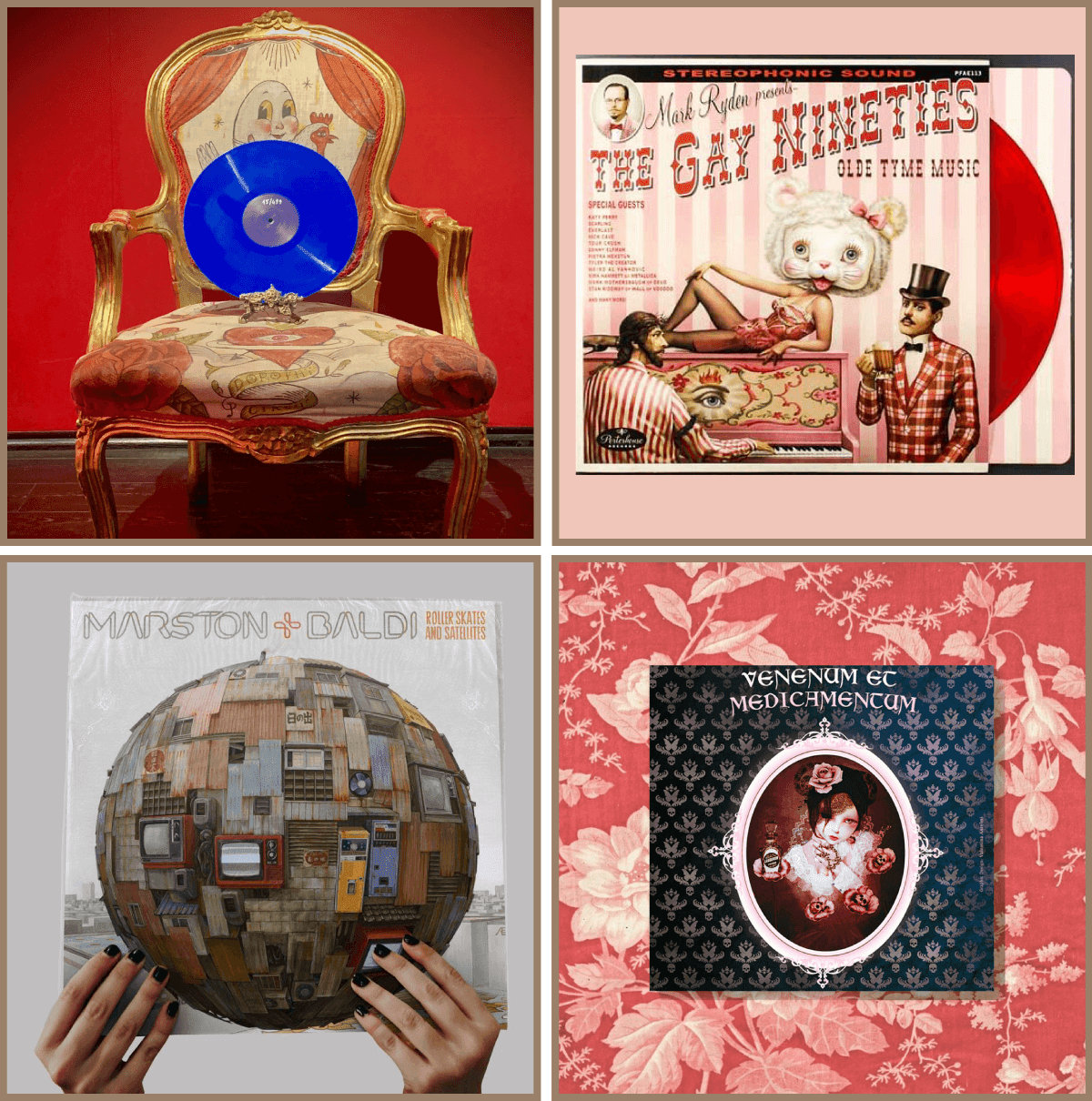
One of the most overlooked but powerful senses is hearing, as it is the only one of the five senses that cannot be perceived directly. Although they are often overlooked, hearing and sound are essential elements of the visual arts. Sounds can create moods that evoke or lend meaning to visual images. They can change the way we see things.
By looking at how hearing influences contemporary art today, it becomes clear how important this element can be for making meaning out of images created by someone else's point of view. The ways artists use sounds are endless and this has been explored throughout history.
When one thinks of how sound can be visually represented, the first thing that comes to mind is synesthesia. Synesthesia is a neurological condition that causes a person's senses to become interwoven with each other. People who have synesthesia might taste colours, or see sounds as shapes, numbers, letters or colours.
Masters of the Past
In the past, the five senses were considered negative sensations. In Antiquity and the Middle Ages, they were thought to be sinful or deceitful. But in the eighteenth century, there was a shift in opinion toward science and away from religion. The senses became positive subjects of discussion in Europe and European paintings.
Throughout history, many artists have said that they could hear a certain song and see the colours in front of their eyes. In some cases, this can be very useful as it gives them an added dimension to understand what they are perceiving.
Many of the great master painters from history were “multi-sensory” gifted . For example, Vincent Van Gogh said that he could hear a certain song when he looked at his painting The Starry Night . It wasn't until after his death in 1890 that people realized he was referring to Starry Night.
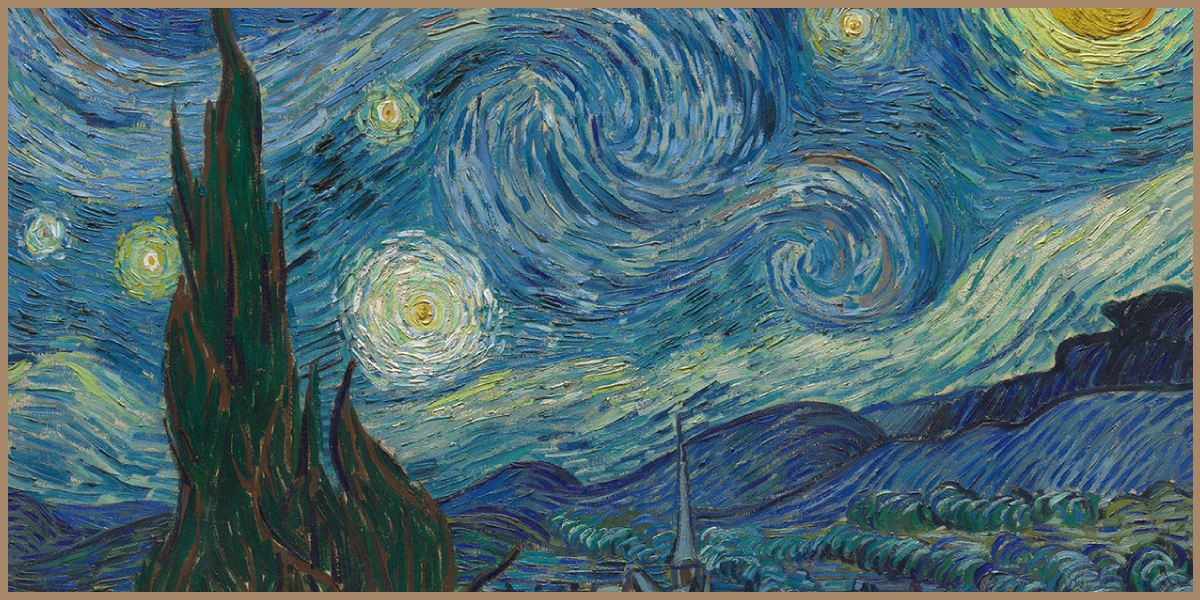
Vincent Van Gogh, Starry Night, 1889
Another example is Marc Chagall who said that he heard songs when he painted his paintings.

Marc Chagall, Song of Songs, 1958
Another artist who used unique and artistic methods to investigate the effects of synestesia in art was Wassily Kandisky. Kandinsky worked on creating experimental perfomances of based on synesthesia the most renowned of which was The Yellow Sound, which was conceived for the theatre and used original musical lighting, and multiple mediums to examine the prevailing colour theories of the time.

Wassily Kandinsky, Yellow-Red-Blue, 1925
The artists used sound to help them visualize what they were painting at a deeper level. They let their senses become intertwined and it helped them convey meaning through visual arts. The fact that these two master painters had synesthesia and were able to paint such beautiful pieces of art is a testament to the power that sound has in visual arts.
Contemporary Artists
After the 1960s, there were artists who took inspiration from pop art and surrealism. Artists such as Andy Warhol , Roy Lichtenstein, and James Rosenquist used pop art to reimagine common cultural icons.
One of the things that these artists were known for was their use of commercial music in their work as a way to critique American culture through visual works that would become influential for future generations of artists. However, they all shared a common interest: sound. They loved music and experimented with sound effects in their work.
For example, Andy Warhol created the album cover for The Velvet Underground and Nico which featured a yellow banana on it. He also had musical recordings of his own voice that were meant to act as an accompaniment to many of his paintings . It is clear that Andy Warhol was inspired by music and sounds.
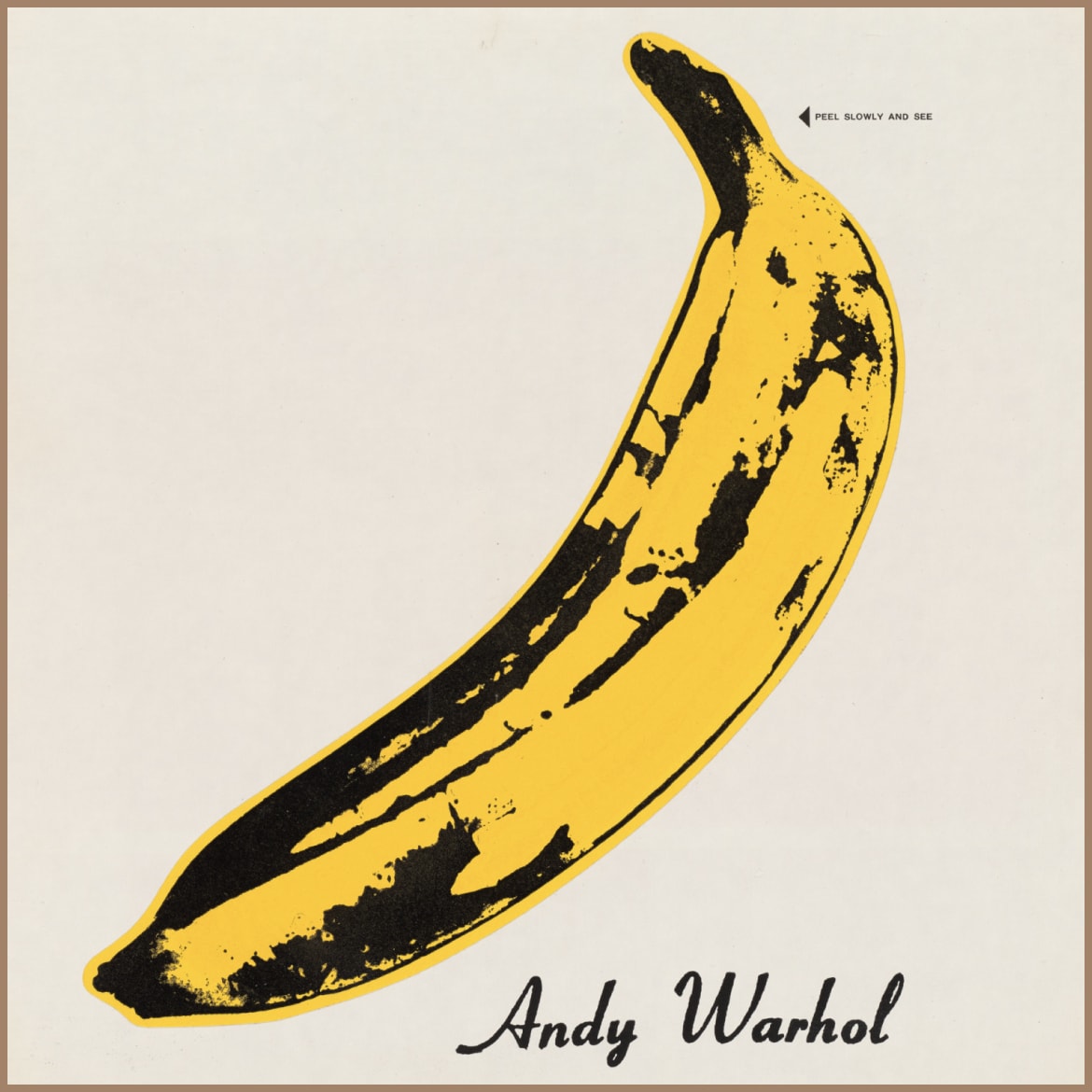
The Velvet Underground and Nico with Andy Warhol, 1966, MOMA
The Pop artist, Roy Lichtenstein, also had an interest in sound as his work frequently featured comic book speech bubbles with words inside them that were meant to represent the dialogue between characters. He would use this technique because he wanted people to focus on the words alone, to create art that was pop, but also had a deeper meaning about modern life in general. His work has become iconic and is still highly sought after today .

Roy Lichtenstein, Whaam!, 1963, Tate Modern
The Pop Surrealist artist, James Rosenquist , combined elements of American culture with surrealism in his works as well. He created large-scale paintings that were meant to be seen from a distance, but also featured the use of comic book style speech bubbles with lyrics inside them .
These artists made it clear how important sound was for their work and how they viewed sound as an essential element in the art world. It is something that has become more relevant over time and continues to be an important element of contemporary art today .
DCG Artists Inspired by Music
The sense of hearing is a strong element in the works of some of the artists showcased at Dorothy Circus Gallery. In their own distinctive ways, these artists create a surrealistic approach to their work through an element of musical influence, be it by mimicking sound or translating the sounds into visible form or simply as a strong source of inspiration.

Millo, Mi Vida, 2020
“I do really love different genres of music and I hope my works of art can match with a lot of them.” - Millo
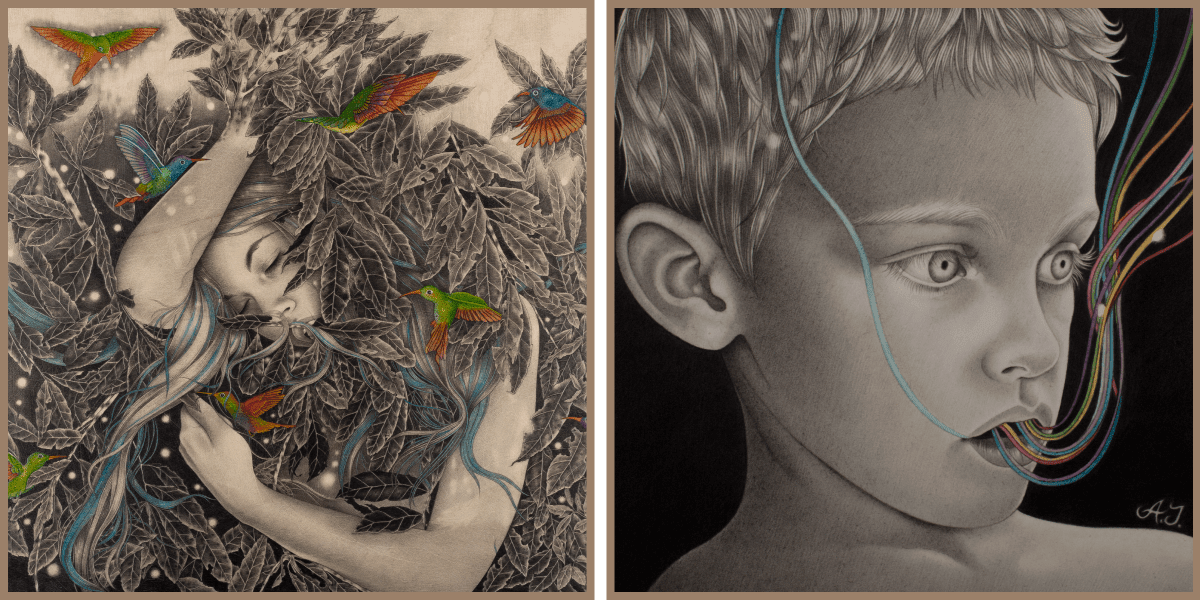 Alessia Iannetti, Silent, 2016 (left), Vision of Sounds, 2014 (right)
Alessia Iannetti, Silent, 2016 (left), Vision of Sounds, 2014 (right)
"When I'm working, I always listen to something that allows me to totally isolate myself from the external reality and projects me into the right state of mind to create. [...} In this particular moment of dissociation, I like to imagine that my third eye opens up and that's how the magic begins." - Alessia Iannetti

Ray Caesar, Daily Constitutional, 2020
“If I have too much noise I cant taste or touch those soft sounds in my mind …that’s the best way I can explain it.” - Ray Caesar
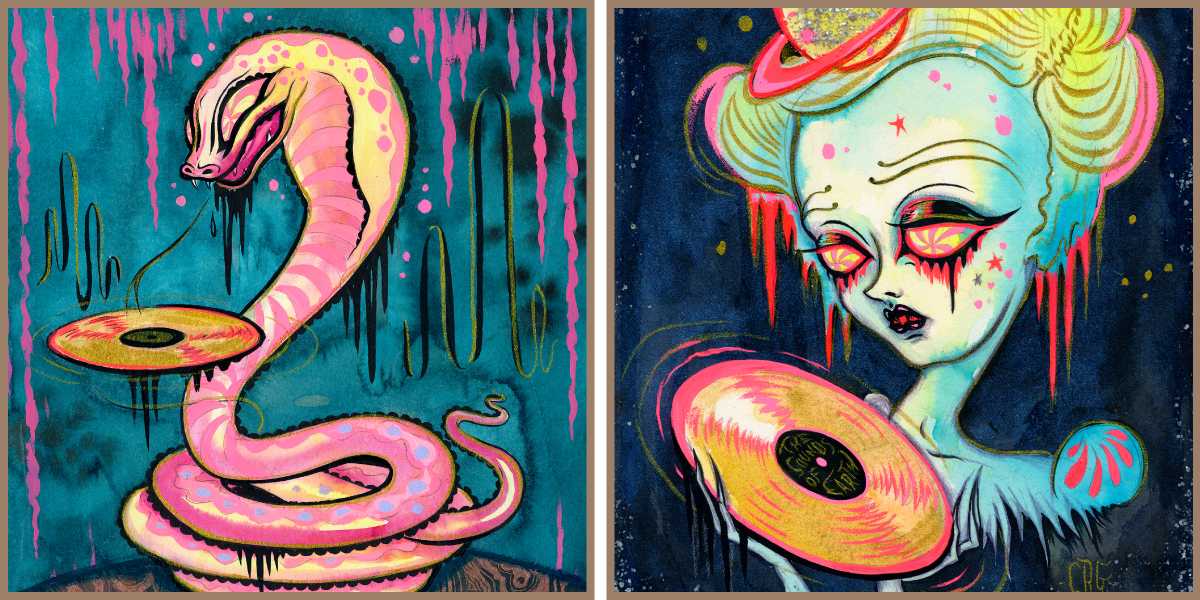
Camille Rose Garcia, Serpent of Enceladus (left), The Sound of Earth (right), 2018
“I think I have always approached art making in the same way as a lot of my favorite bands. Bands like The Clash and the Dead Kennedys make this really rad music, that in some cases sounds really fun, but still has a social commentary.” - Camille Rose Garcia
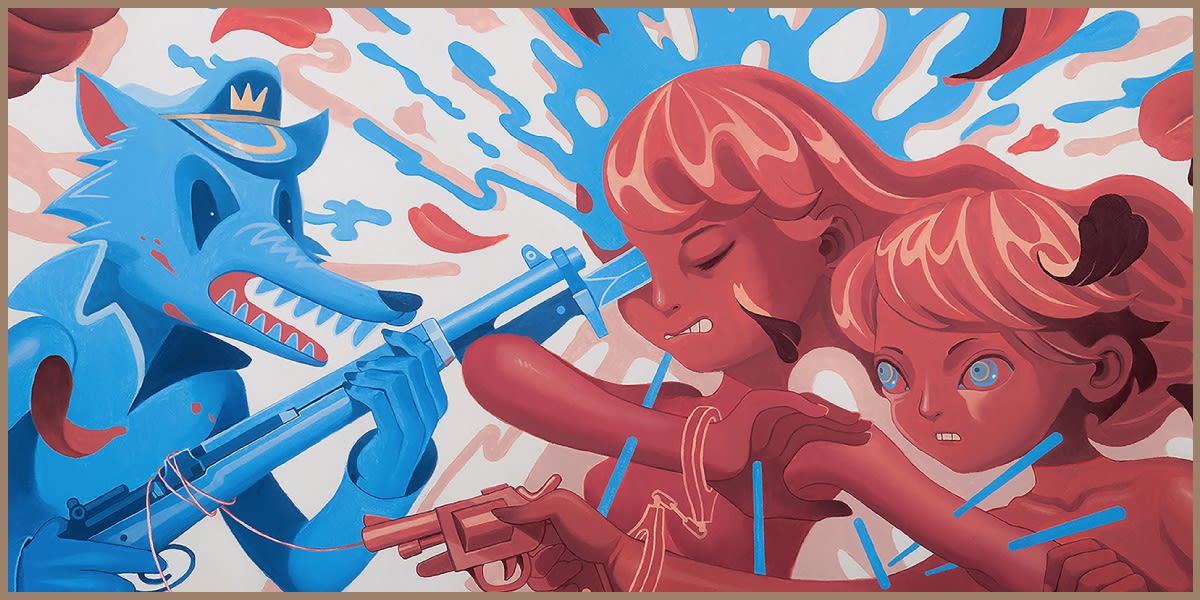
Bobby Leash, Don't You Dare, 2020
My Chemical Romance is the band I discovered since I was in high school. Their songs have a sarcastic yet beautiful way to show the struggle of life. How to live with the sad but inevitable death with a little bit of humor. - Bobby Leash
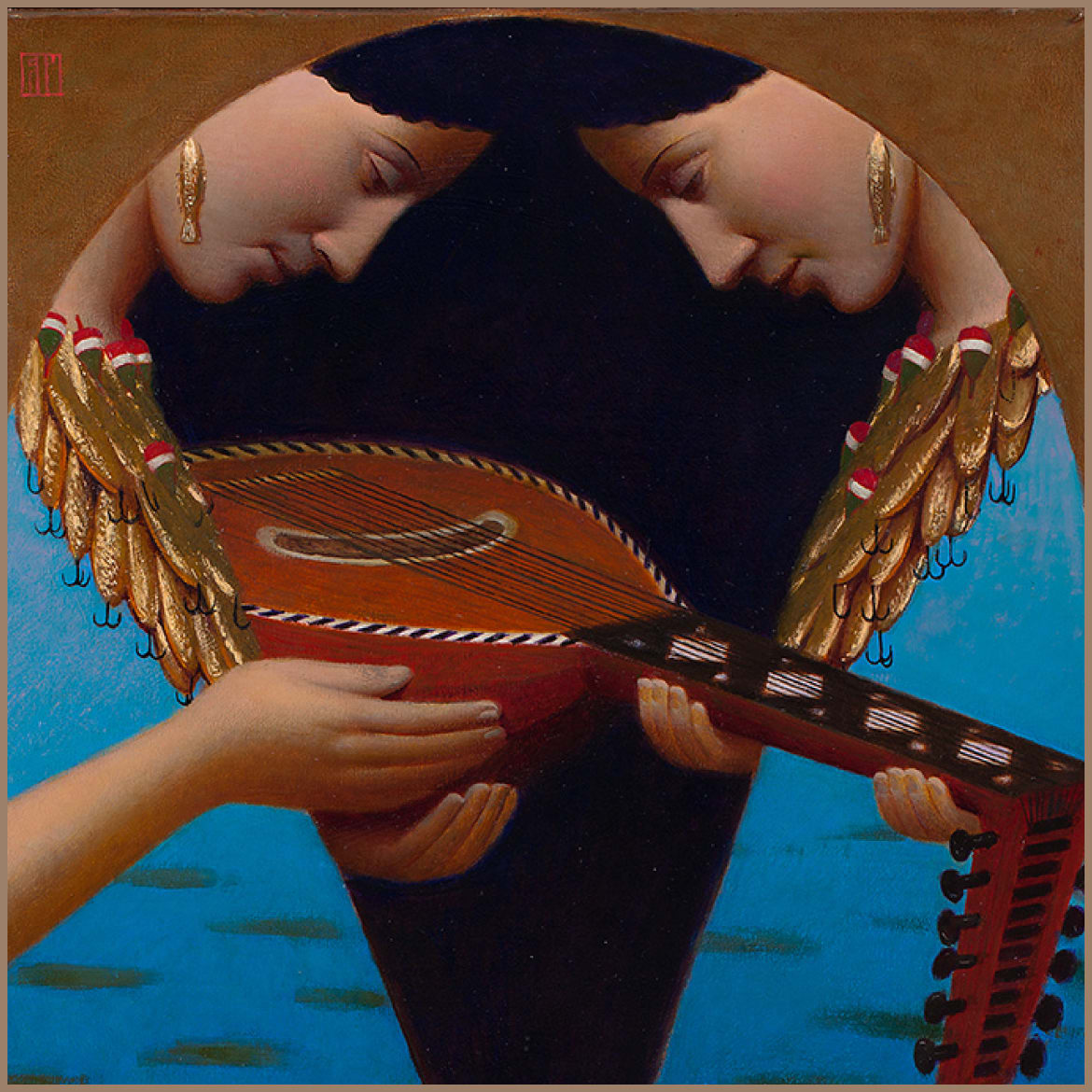
Andrey Remnev, Music on Water, 2012
Music on the Water is dedicated to Carel Fabritius, the Dutch painter of the 17th century, a friend of Vermeer. Fabritius died tragically in Delft in 1654, in the explosion of the Delft gunpowder store which destroyed one third of the city. Having been in Delft, I really imagined this tragedy and portrayed my understanding of that moment. In my mind, the musical instruments, that Fabritius used to draw, have remained floating on the water canals of the city. - Andrey Remnev
The Six Senses Concept Store: Auditus Collection
The concept store delves into multiple mind layers. It draws inspiration from dreams and myths, creating a multi-sensorial experience with numerous products inspired by a voyage into the subconscious.
The curatorial line of the Gallery inspires the Six Senses Concept Store and the selected collaborations with selected artists, artisans and artisanal perfumers, creating a bridge and blending the boundaries between art and other realms that touch and revive all of our senses.
The Auditus Collection dedicated to the sense of hearing includes a series of albums originated from the Gallery’s collaboration with artists and musicians.
